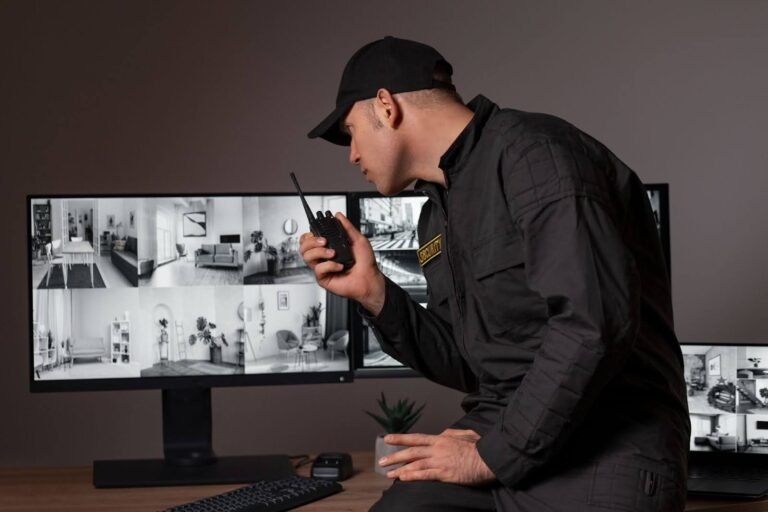Whether you’re a homeowner, a business owner, or someone managing a multi-site facility, video surveillance installation is no longer just about putting up cameras and calling it a day.
In 2025, the expectations are smarter systems, sharper coverage, and seamless integration with your daily operations. If you’re gearing up to install or upgrade your security system this year, here’s what you should know before the first camera goes up.
Define the Purpose First
Before any technical talk, clarify your “why.” Are you installing cameras to prevent theft? Monitor employee behavior? Keep an eye on deliveries at home? Your purpose will directly influence the type of system you choose.
Business security camera systems are often more complex, involving multiple zones, remote access, and compliance with privacy laws. On the other hand, residential setups may focus more on motion detection, mobile alerts, and integration with smart home devices.
Wired vs. Wireless: Make an Informed Choice
You’ll have to pick between a traditional wired or wireless (often Wi-Fi-based) setup. Both have pros and cons.
Wired systems are more reliable and ideal for large or commercial properties, especially when paired with a dedicated NVR (Network Video Recorder). They’re less prone to interference but require more planning and professional installation.
Wireless systems are easier to install and cost-effective for small homes or temporary setups. However, they depend heavily on internet stability and can be more vulnerable to hacking if not secured properly.
Outdoor Camera Placement Needs a Strategy
This is where a lot of DIY installations go wrong. Poor camera placement means blind spots and limited usefulness when you need footage. Use an outdoor security camera placement diagram during planning. Ideally, you want:
- Coverage of all entry points (doors, windows, gates)
- No obstructions like tree branches or decorations
- Overlap between camera fields of view
- Avoiding direct sunlight or glare
And height matters. Position cameras 8–10 feet off the ground. Too low, and they can be tampered with. Too high, and facial recognition becomes tricky.
Don’t Underestimate Lighting Conditions
If you’re installing exterior cameras, outdoor night vision camera capabilities are necessary. Look for cameras with infrared (IR) LEDs or color night vision. These help you see even in pitch-dark environments. Make sure the camera’s specs match your lighting conditions.
Parking lots, alleys, and rural properties need stronger IR performance than a well-lit porch. Also, consider installing motion-triggered lights in camera zones. It not only improves image quality but also deters unwanted activity.
Storage & Retention: How Long Do You Need the Footage?
Footage doesn’t store itself forever. You’ll need to decide between:
- Local storage: On an NVR or microSD card. More control, no monthly fees, but vulnerable to damage/theft.
- Cloud storage: Accessible remotely, safer from physical damage, but can get expensive long-term.
For most business security systems, retaining footage for 30 to 90 days is recommended, depending on industry regulations and internal policies. For homeowners, 7–14 days is usually enough unless there’s frequent activity to review.
Expect More AI, Less Manual Review
In 2025, most modern video surveillance installation systems use some level of AI or machine learning. That means:
- Activity zoning, so you’re only alerted when movement happens in high-priority areas
- Smart alerts (e.g., only notifying you when a person, not a squirrel, is detected)
- Facial recognition (in higher-end systems)
- License plate reading for vehicles
These features reduce the noise and help you focus on what matters. Just be aware: with smarter tech comes greater responsibility in how you manage data and privacy.
Costs of Video Surveillance Installation in the USA
Costs of video surveillance installation vary wildly depending on system type, number of cameras, storage, and whether you’re hiring a pro. On average in 2025:
- Basic home installation: $500–$1,500
- Mid-sized business system: $2,000–$5,000
- Large commercial setup: $10,000+
It includes cameras, recorders, cabling, software, and labor. If you’re building new or remodeling, installing cabling early saves a ton in retrofitting costs.
Remote Access & Monitoring
Most systems today offer apps or web dashboards to monitor your feed from anywhere. Don’t fall into the trap of a smart system with lazy security. Just make sure you:
- Set strong, unique passwords
- Use two-factor authentication
- Regularly update firmware
Conclusion
Want a smarter, tighter security setup? Plan with purpose, install with precision, and let the system do the heavy lifting. With the right approach, your video surveillance installation in 2025 won’t just protect your space; it’ll give you peace of mind every day after.
FAQs
Q1. How long does a video surveillance installation take?
Most residential jobs finish in a day. Business setups may take 2–5 days.
Q2. Can I install outdoor cameras myself?
Yes, but improper placement or wiring can ruin effectiveness. Follow a placement diagram or hire a pro.
Q3. Do outdoor night vision cameras work in complete darkness?
Yes, if they have built-in infrared or full-color night vision.
Q4. What’s better: cloud or local storage?
Cloud is safer from theft; local storage offers more control. Hybrid systems are ideal.
Q5. Are business security camera systems tax-deductible?
Often, yes, as a business expense. Check with your tax advisor.


